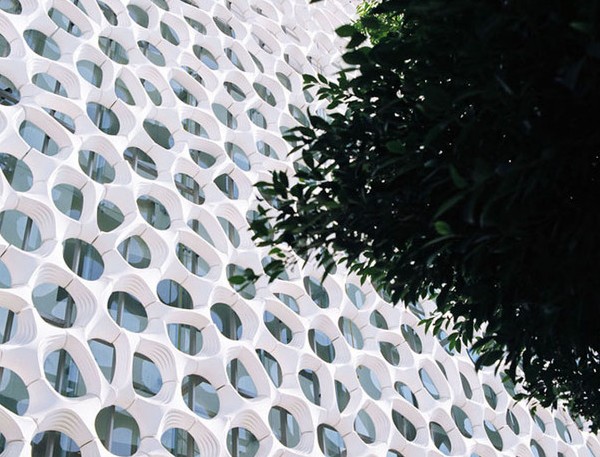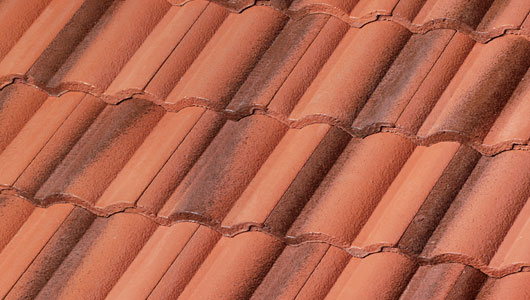Titanium dioxide—the familiar white pigment in paint, toothpaste, skim milk, and sunblock—is promoted as a “smog-eating” coating or additive to roofs, facades, road concrete, roadside barriers, and other surfaces.
A hospital in Mexico City now shows us that the white stuff can be photogenic as well as photocatalytic. The hospital’s glass curtain walls are in turn curtained with a giant lacy screen made of titanium-coated Prosolve370e modules. This German product is designed to induce air turbulence that speeds up the removal of nitrate particles, the smog by-product. Being very slick, the coating also speeds up the washing away of bird droppings and other dirt.

Between the nitrates and the guano, I would expect plant growth to flourish beneath the screen.
Titanium dioxide can do its good work even where you don’t want to see white. California’s Boral Roofing impregnates roof tiles with it. They’re the same terra cotta color as tiles without TiO2, and cost about 25% more.

Well-known chemical reactions are responsible. Activated by daylight, the titanium dioxide releases free radicals into the air which catalyze a chemical reaction converting nitrous oxide to nitrates. Nitrous oxide is one of the main smog gases, and also the third most influential anthropogenic greenhouse gas. Nitrates, in contrast, are fertilizer, and are solids.
So, how strong is this effect? And how big a carbon footprint does it have to overcome? Alcoa, which manufactures TiO2-coated aluminum tiles, claims that 10,000 square feet of tiles remove the daily pollution of four cars. Boral Roofing makes a claim that sounds a little stronger: 2,000 square feet of roof annually erase 10,800 miles of driving. And Co.Exist has come up with a figure, apparently from the manufacturer, that the hospital facade in Mexico City neutralizes 8750 cars driving by. (Hmmm. Is that just for the five minutes it takes them each to drive by?) These levels of effectiveness assume a well-polluted location. Mexico City qualifies easily.
As for downsides that have to be outweighed, a life cycle assessment finding a net benefit just arrived in the scientific literature. The study found that positive effects on “acidification, eutrophication, air pollutants and smog formation” outweigh the relatively small negatives which were in terms of “global warming, fossil fuel depletion, water intake, human health, and ecological toxicity.”
In addition, many calculations over the years have suggested that we can significantly cool the planet by simply painting roofs and pavements white, thanks to albedo, the reflection of solar radiation off of pale surfaces.
Titanium, mined from sand deposits in several parts of the world, is not an especially scarce resource. I’d say we can expect to see increasing use of sunblock on buildings and roadways. And we can welcome it.